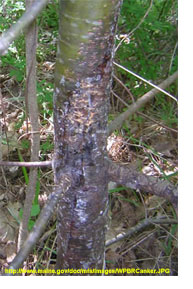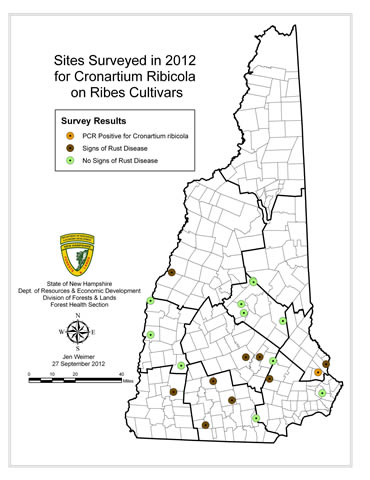White Pine Blister Rust
 White pine blister rust (WPBR) is caused by the fungus Cronartium ribicola. The disease was introduced into the United States from Europe in the early 1900s and spread quickly, causing significant white pine mortality. Because currants and gooseberries (Ribes sp.) are also a host for the disease, infection of white pine increases when they are planted nearby.
White pine blister rust (WPBR) is caused by the fungus Cronartium ribicola. The disease was introduced into the United States from Europe in the early 1900s and spread quickly, causing significant white pine mortality. Because currants and gooseberries (Ribes sp.) are also a host for the disease, infection of white pine increases when they are planted nearby.
Certain species of currants and gooseberries were considered resistant to transmitting the disease. Until recently, gardeners could plant these specific varieties with a permit from the NH Division of Forests and Lands. However, a survey in 2012 on Ribes sp. in NH confirmed WPBR on resistant varieties. In response to this re-emerging forest health threat, the Division of Forests and Lands is calling for a one-year moratorium on planting Ribes in the state. Read more about this re-emerging forest health threat here.
| The Basics | |||||||||||
|
|||||||||||
|
|||||||||||



